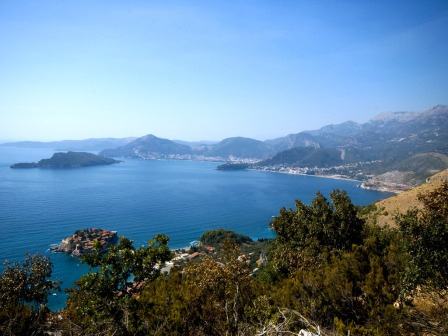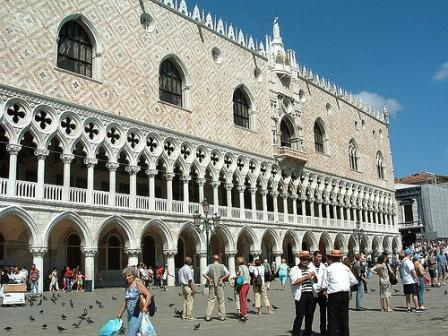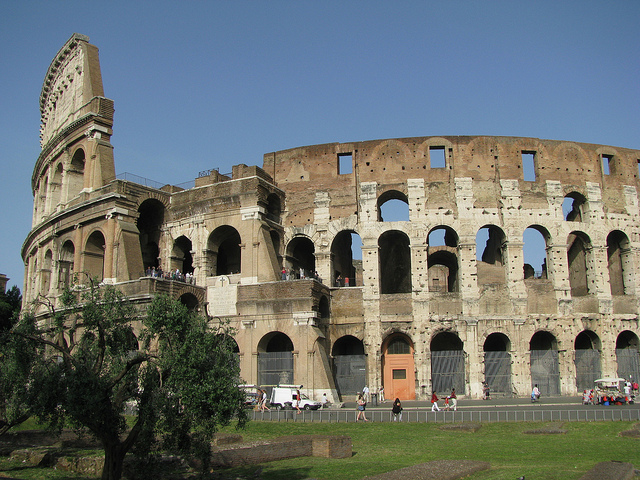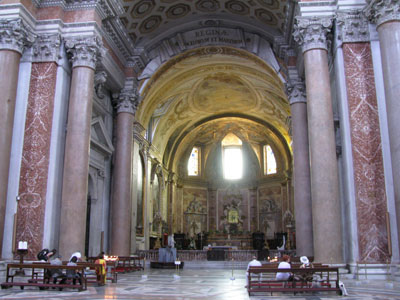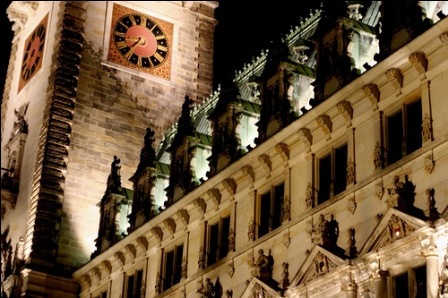This is the next article in a series of interviews with local experts from different regions. Jelena Jeca came to me through Facebook where I was impressed by her photo collections of her home country of Montenegro. Formerly part of the now defunct Yugoslavia, Montenegro is a really beautiful, yet quite unknown corner of Europe. Here is Jelena to tell us about all the travel opportunities in this tiny country on the Adriatic Sea.

1. Please tell us about yourself, where were you born, where did you grow up / where do you live now and what did you study? Hello. I am Jelena, I was born in Montenegro in the town of Bar where I still live and work. Montenegro is a small country and has much potential for tourism development. So in 2005 I decided to enrol in the Faculty of Tourism, which is located in my hometown. After completing undergraduate studies I continued with graduate studies for another year and finished my degree in October of 2009, specializing in Tourism Management. 2. What is your experience in the tourism industry and what are you future plans for opening a tourism business? During my studies I completed a brief practical work assignment at a travel agency, selling airline tickets. After graduation, I continued to work as an accountant in our family business. But I really do enjoy working in tourism, meeting people from their different cultures. My goal is to establish my own business, a travel company that will receive tourists that visit Montenegro. This country deserves much more attention than it has been receiving. Also, one of my other hobbies is photography, and you can see some of my work on my Art Travelling profile in Facebook.

3. Please give us a brief overview of Montenegro – where is it located? How does one get into the country and what about local transportation? Montenegro is located in the Balkans or southeastern Europe along the coast of the Adriatic Sea. It has a coastline on the Adriatic Sea to the south and borders Croatia to the west, Bosnia and Herzegovina are located to the northwest, Serbia to the northeast, Albania to the southeast. Its capital and largest city is Podgorica. Montenegro has two international airports, with their IATA Airport Codes : Podgorica Airport and Tivat Airport. Railway connections exist between Bar and Belgrade in Serbia. Overall length of roads in Montenegro is 5,277km, of which 1,729km are paved. Most roads in Montenegro are two lanes. The Port of Bar is the major seaport in Montenegro. It is capable of handling about 5 million tons of cargo, and is a port for ferries to Bari and Ancona in Italy. Kotor, Risan, Tivat and Zelenika (in Bay of Kotor) are smaller ports. Montenegro’s rivers are generally not navigable, except for tourist attractions such as rafting on Tara River.

4. Please tell us a bit about Montenegro’s history and geography. The history of Montenegro is very long, so I will comment briefly on it. The first recorded settlers of present-day Montenegro were Illyrians, the Docleata. In 9 AD the Romans conquered the region. Slavs colonized the area in the 5th and 6th centuries, forming a semi-independent principality called Duklja, that was involved in Balkan medieval politics with ties to Rascia and Byzantium and to a lesser extent Bulgaria. Geography: Montenegro borders Croatia, Bosnia and Herzegovina, Serbia, Kosovo, and Albania. The landscapes of Montenegro range from high peaks along its borders with Serbia and Albania, a segment of the Karst of the western Balkan Peninsula, to a narrow coastal plain that is only one to four miles (6 km) wide. The plain stops abruptly in the north, where Mount Lovćen and Mount Orjen plunge into the inlet of the Bay of Kotor. Montenegro’s large Karst region lies generally at elevations of 1,000 metres (3,280 ft) above sea level; some parts, however, rise to 2,000 m (6,560 ft), such asMount Orjen (1,894 m/6,214 ft), the highest massif among the coastal limestone ranges. The Zeta River Valley, at an elevation of 500 m (1,600 ft), represents the region with the lowest altitude.

5. Our audience would also like to know about the climate and weather of Montenegro. The coastal regions generally enjoy mild winters and hot summers; sea temperatures range from 10-12°C in the winter to 25-28°C during summer. During the winter bad weather tends to accumulate mostly over the coastal mountain ranges, which frequently leads to warm and sunny winter days. The contrast of the mild winter weather with a backdrop of snow-capped mountains is delightful. 6. What are some of the main tourist destinations in Montenegro? Which are your personal favourites? The best places to visit include the following: Ostrog Monastery – Niksic, Kotor – the Bay of Kotor, Lovcen Mountain, Ada Bojana – Coast, Skadar Lake – Virpazar, Mountain Durmitor -Zabljak town, and Tara River Canyon, Sveti Stefan – Budva. My personal favourite places are Boka Bay – Perast Morinj near Kotor, Herceg Novi – the old town and the north of Montenegro, and the town of Kolasin. Besides these places there are many small bays that are an inspiration for many visitors.

7. How did the Balkan War of the 1990s affect Montenegro and what is the situation today? As in any country that was affected by the Balkan War, the return back to normal was quite slow. There were a lot of tourists at that time who wanted to visit Montenegro, but the hostility among the affected nations was quite pronounced. Now it is different, a lot of tourists are coming and this fear of hostilities is no longer there. Montenegro is calm and stable today. 8. Please tell us more about the tourism infrastructure in Montenegro, what about large and small hotels, bed and breakfasts, restaurants, resorts, attractions, adventure travel companies and other tourism service providers? The coast of Montenegro represents the most visited area, especially during the summer. Apart from the natural beauty that Montenegro is widely known for, in this area you can also find many beautiful hotels, resorts, villas, apartments and private accommodations of all types, quality and price. Montenegro is able to welcome guests with different needs and expectations. Montenegro also has a very large number of travel agencies and tour operators. It is a destination for everyone.

9. Please tell us about safety precautions that one should follow when travelling in Montenegro. What, if any, special precautions are there for solo female travellers in Montenegro? The country is really safe and there is no concern for travellers. There are no specific safety concerns for female travellers. 10. What about the language issue? How easy is it to communicate with the locals? Many people in Montenegro speak at least one foreign language, and the most common of these is English. Young people study English from elementary school onwards, so they are able to communicate very well.

